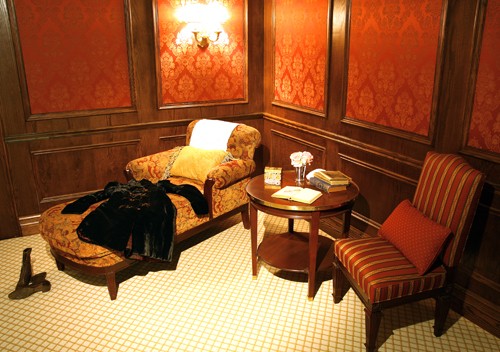I’ll come right out and admit it: I’m one of the very few people who never saw “”Titanic.”” After all, I was a kid when it came out — so my parents forbade me because of that oh-so-raunchy sex scene with the steamy handprint. But this weekend I got the chance to see something even better. Premier Exhibitions, Inc., the company that brought us “”BODIES…The Exhibition”” this summer, is offering another exceptional experience at the Rialto Building.
“”Titanic: the Artifact Exhibition”” opened on Oct. 23 and will be on display until February. This unique collection takes visitors on a journey back to the Titanic’s fateful maiden voyage in 1912. It offers 127 authentic artifacts that have been recovered from the shipwreck. According to Shawndon Beavers, the Education Coordinator for the exhibition, five of these pieces have never been displayed in public before. But the excitement doesn’t end there. “”Titanic: the Artifact Exhibition”” is not only an exhibit, but an experience.
The exhibition focuses on the stories of the people on board the Titanic that fateful April 14. Many of the personal triumphs and losses of the Titanic’s passengers are often forgotten in the bigger picture of the tragedy. However, this exhibit is committed to remembering those people. At the beginning of the tour, each visitor is given a boarding pass, which represents a passenger who traveled on the Titanic. These boarding passes give the name, age and social class of the traveler. They also indicate where the person was coming from, where they were going to, who accompanied them and their reason for traveling. It brings a whole new level of meaning to the story of the Titanic when we grasp how real these people were.
The exhibition is split into various sections telling the Titanic’s story in chronological order. This method is particularly effective because each part of the exhibit is able to convey a specific mood. Background music, historical photographs, written information and the actual artifacts all play a part in creating the Titanic experience.
For example, in the beginning of the tour visitors hear upbeat songs from the 1920s, see pictures of the Titanic in all its glory, read facts about the people who built it and see the massive propellers that moved the ship. Other sections include a room that recreates a first class passenger cabin, a place that shows the menu and a large section dedicated to the stories of various travelers on board the ship.
Information in each section is clearly displayed, and visitors to the “”Titanic: the Artifact Exhibition”” are given automated headsets that guide the tour. In addition, employees stationed around each section of the exhibit are very knowledgeable and tell even more personalized stories than what the audio tours have to offer. I highly recommend speaking with them because it really adds to the overall experience.
After walking through the entire exhibit, visitors enter one more room. Here, they must remember their boarding pass. They can look for their person’s name on the wall that lists who survived — and who was lost at sea.
“”Titanic: the Artifact Exhibition”” is an emotional, educational and meaningful exhibit. Much like the movie (which I went home and watched for the first time — and fell in love with), the exhibit makes people feel a vast array of emotions. It helps us remember the tragic events of the Titanic’s sinking, as well as the inspirational stories of people who survived.









